Related Research Articles
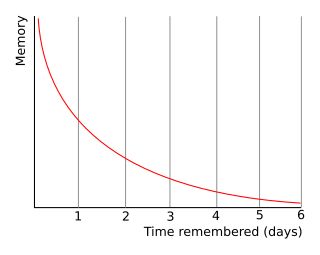
The forgetting curve hypothesizes the decline of memory retention in time. This curve shows how information is lost over time when there is no attempt to retain it. A related concept is the strength of memory that refers to the durability that memory traces in the brain. The stronger the memory, the longer period of time that a person is able to recall it. A typical graph of the forgetting curve purports to show that humans tend to halve their memory of newly learned knowledge in a matter of days or weeks unless they consciously review the learned material.

A mnemonic device or memory device is any learning technique that aids information retention or retrieval in the human memory, often by associating the information with something that is easier to remember.
The major system is a mnemonic technique used to help in memorizing numbers.
The mnemonic peg system, invented by Henry Herdson, is a memory aid that works by creating mental associations between two concrete objects in a one-to-one fashion that will later be applied to to-be-remembered information. Typically this involves linking nouns to numbers and it is common practice to choose a noun that rhymes with the number it is associated with. These will be the pegs of the system. These associations have to be memorized one time and can be applied repeatedly to new information that needs to be memorized.
The Dominic system is a mnemonic system used to remember sequences of digits similar to the mnemonic major system. It was invented and used in competition by eight-time World Memory Champion Dominic O'Brien.
Memorization is the process of committing something to memory. It is a mental process undertaken in order to store in memory for later recall visual, auditory, or tactical information.
Piphilology comprises the creation and use of mnemonic techniques to remember many digits of the mathematical constant π. The word is a play on the word "pi" itself and of the linguistic field of philology.
Linkword is a mnemonic system promoted by Michael Gruneberg since at least the early 1980s for learning languages based on the similarity of the sounds of words. The process involves creating an easily visualized scene that will link the words together. One example is the Russian word for cow : think and visualize "I ran my car over a cow."
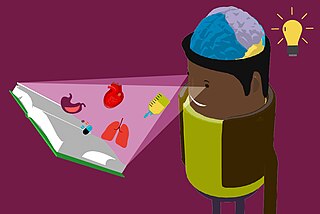
Dual-coding theory is a theory of cognition that suggests that the mind processes information along two different channels; verbal and nonverbal. It was hypothesized by Allan Paivio of the University of Western Ontario in 1971. In developing this theory, Paivio used the idea that the formation of mental imagery aids learning through the picture superiority effect.

Memoria was the term for aspects involving memory in Western classical rhetoric. The word is Latin, and can be translated as "memory".
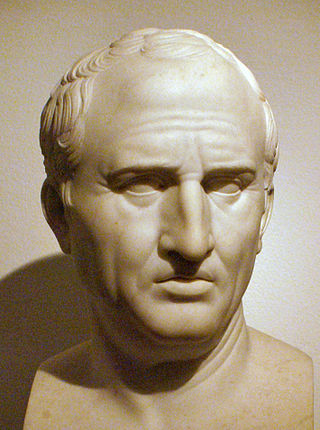
The method of loci is a strategy for memory enhancement, which uses visualizations of familiar spatial environments in order to enhance the recall of information. The method of loci is also known as the memory journey, memory palace, journey method, memory spaces, or mind palace technique. This method is a mnemonic device adopted in ancient Roman and Greek rhetorical treatises. Many memory contest champions report using this technique to recall faces, digits, and lists of words.
The title mnemonist refers to an individual with the ability to remember and recall unusually long lists of data, such as unfamiliar names, lists of numbers, entries in books, etc. Some mnemonists also memorize texts such as long poems, speeches, or even entire books of fiction or non-fiction. The term is derived from the term mnemonic, which refers to a strategy to support remembering, but not all mnemonists report using mnemonics. Mnemonists may have superior innate ability to recall or remember, in addition to relying on techniques.
The art of memory is any of a number of loosely associated mnemonic principles and techniques used to organize memory impressions, improve recall, and assist in the combination and 'invention' of ideas. An alternative term is "Ars Memorativa" which is also translated as "art of memory" although its more literal meaning is "Memorative Art". It is also referred to as mnemotechnics. It is an 'art' in the Aristotelian sense, which is to say a method or set of prescriptions that adds order and discipline to the pragmatic, natural activities of human beings. It has existed as a recognized group of principles and techniques since at least as early as the middle of the first millennium BCE, and was usually associated with training in rhetoric or logic, but variants of the art were employed in other contexts, particularly the religious and the magical.
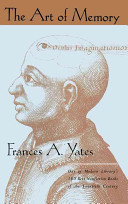
The Art of Memory is a 1966 non-fiction book by British historian Frances A. Yates. The book follows the history of mnemonic systems from the classical period of Simonides of Ceos in Ancient Greece to the Renaissance era of Giordano Bruno, ending with Gottfried Leibniz and the early emergence of the scientific method in the 17th century.
Exceptional memory is the ability to have accurate and detailed recall in a variety of ways, including hyperthymesia, eidetic memory, synesthesia, and emotional memory. Exceptional memory is also prevalent in those with savant syndrome and mnemonists.
Memory sport, sometimes referred to as competitive memory or the mind sport of memory, refers to competitions in which participants attempt to memorize then recall different forms of information, under certain guidelines. The sport has been formally developed since 1991 and features national and international championships. The primary worldwide organizational bodies are the IAM and WMSC.
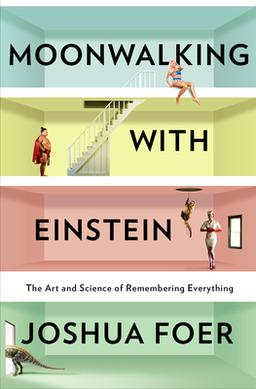
Moonwalking with Einstein: The Art and Science of Remembering Everything is a nonfiction book by Joshua Foer, first published in 2011. Moonwalking with Einstein debuted at number 3 on the New York Times bestseller list and stayed on the list for 8 weeks.
The USA Memory Championship is an annual competition that took place every spring in New York City until 2016, and is currently held in Orlando, Florida, after an online qualifier. It was founded by Tony Dottino, President of Dottino Consulting Group, Inc., and Marshall Tarley in 1997. Designed to test the limits of the human brain, the USA Memory Championship is an organized competition in which Memory Athletes (MAs) attempt to memorize as much information as possible in events such as Names and Faces, Cards, Random Numbers, Images, and guest information at a fictional "Tea Party". Since 2018, there is also often an event called Long-Term Memory in which the MAs are given reams of data a month in advance about a wide variety of subjects such as the Periodic Table of the Elements, Space Shuttle missions, NFL Hall-of-Famers, etc. Participation is open to US citizens who are at least 12 years of age. The competition currently consists of 9 total events, 5 of which are online qualifying events, while the last four events are held at a live event to determine the champion.
Elaborative encoding is a mnemonic system which uses some form of elaboration, such as an emotional cue, to assist in the retention of memories and knowledge. In this system one attaches an additional piece of information to a memory task which makes it easier to recall. For instance, one may recognize a face easier if character traits are also imparted about the person at the same time.

Lynne Kelly is an Australian writer, researcher and science educator. Her academic work focuses mainly on the study of primary orality, as well as the mnemonic devices used by ancient and modern oral cultures from around the world. She proposes a theory on the purpose of the Stonehenge megalithic, which she believes served as a centre for the transmission of knowledge among Neolithic Britons.
References
- Bremer, Rod. The Manual - A guide to the Ultimate Study Method (USM) (Amazon Digital Services)
- Einstein, G. and McDaniel, M. (1987). Distinctiveness and the Mnemonic Benefits of Bizarre Imagery in Imagery and Related Mnemonic Processes: Theories, Individual Differences, and Applications, ed McDaniel, M.A. and Pressley, M. (New York: Springer-Verlag, 1987). 79-102.
- Hock, H.S., Romanski, L., Galie, A., Williams, C.S. (1978). Real-World Schemata and Scene Recognition in Adults and Children. Memory and Cognition, 6, 423–31.
- Kozarenko, Vladimir Giordano Memorization System 2005
- Ziganov, M. A. and Kozarenko, Vladimir Mnemonics - All Secrets of Super Memory 2000
- Ziganov, M. A. and Kozarenko, Vladimir Foreign Language Memorization Technique 2001